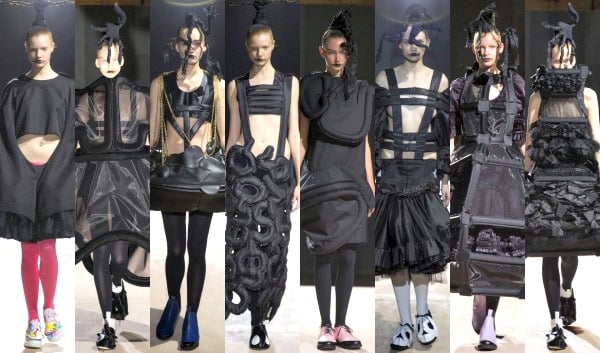Blog
Jememôtre: Exploring Its Meaning, and Modern Importance

Introduction
In a world where ideas evolve quickly, certain terms capture attention for their uniqueness and depth. One such term is jememôtre. While not a common word, jememôtre is gaining traction as people search for ways to describe abstract forms of measurement beyond numbers and statistics. It reflects how humans evaluate feelings, creativity, balance, and innovation in ways that cannot be explained with rigid formulas.
This article takes a deep dive into the meaning of jememôtre, its roots, its real-world applications, and why it matters in today’s fast-changing global culture.
Defining Jememôtre
At its simplest, it can be described as a symbolic or qualitative form of measurement. Instead of relying on mathematical scales, it deals with human-centered dimensions such as emotions, perception, balance, and creativity.
For instance:
-
A leader might use jememôtre to assess employee morale rather than just productivity numbers.
-
A musician could measure the depth of a song’s impact with jememôtre rather than chart rankings.
-
In everyday life, people may rely on it to evaluate happiness or satisfaction.
Thus, it shifts the focus from quantity to quality.
Origins and Evolution of Jememôtre
Although the word itself sounds modern, the concept behind it is ancient. Many traditions across the world relied on symbolic evaluation:
-
Ancient Greece: Philosophers measured virtue, harmony, and balance in non-numerical ways.
-
Eastern Practices: Systems like Ayurveda and Taoism emphasized qualitative states such as balance or flow.
-
Art Movements: Renaissance thinkers considered proportion and beauty as a kind of jememôtre for creative works.
In modern times, it has evolved as a metaphor to explain abstract evaluation in education, leadership, and culture.
Why Jememôtre Matters Today
The 21st century is filled with tools for numerical measurement analytics, algorithms, and statistics. However, numbers cannot always capture the full picture. That’s where jememôtre finds relevance.
1. In Education
Traditional exams focus on grades, but modern education values creativity, empathy, and collaboration. it provides a lens to evaluate these qualities.
2. In Technology
As artificial intelligence grows, researchers struggle to program human emotion into machines. Jememôtre-like methods help bridge the gap between logic and empathy.
3. In Business
Companies increasingly measure employee happiness, customer satisfaction, and workplace culture using concepts aligned with it.
4. In Lifestyle
Mindfulness and personal well-being rely on jememôtre-like evaluation, where balance and satisfaction outweigh material achievement.
Jememôtre and Creativity
Creativity is one area where jememôtre shines the most. Unlike metrics such as sales or ratings, it captures emotional resonance and long-term influence.
-
A poem’s jememôtre may lie in how deeply it touches readers.
-
A film’s jememôtre could be its ability to inspire conversations long after release.
-
A painting’s jememôtre might be the emotions it awakens rather than its size or cost.
In this sense, jememôtre helps society value art and imagination in a more holistic way.
Cultural Perspectives on Jememôtre
Different societies interpret jememôtre differently:
-
Western Context: It often connects to individuality, innovation, and breaking boundaries.
-
Eastern Context: It aligns with collective well-being, inner harmony, and balance.
-
Global Context: In today’s connected world, jememôtre is being shaped as a universal idea of qualitative measurement.
These interpretations highlight how flexible and adaptive it truly is.
Benefits of Using Jememôtre
Understanding and applying it offers several advantages:
-
Encourages Holistic Thinking – Moves beyond numbers to include emotions, values, and experiences.
-
Supports Innovation – Helps innovators design solutions that account for human needs.
-
Improves Personal Growth – Encourages individuals to measure happiness and progress in meaningful ways.
-
Strengthens Culture – Allows societies to evaluate success by more than economic or material achievements.
Challenges Around Jememôtre
Despite its appeal, it also faces limitations:
-
Subjectivity: People may interpret it differently, making consistency difficult.
-
Lack of Standard Rules: Unlike scientific scales, there’s no universal jememôtre framework.
-
Integration Issues: Combining jememôtre with existing systems of measurement can be challenging.
Still, these challenges also show why it is valuable: it pushes people to think outside rigid boundaries.
Future Outlook for Jememôtre
As societies prioritize well-being, sustainability, and creativity, it is likely to play a bigger role. We may see:
-
Schools using jememôtre-inspired evaluation systems.
-
AI tools incorporating it models to better understand human emotion.
-
Businesses applying it to track employee engagement in meaningful ways.
-
Communities adopting jememôtre to measure collective happiness.
By blending traditional metrics with jememôtre, future societies can achieve a more balanced perspective.
Conclusion
In conclusion, it is more than just an unusual term it is a forward-thinking concept that challenges us to look beyond numbers. Whether in education, creativity, culture, or personal life, it provides a fresh lens for evaluating human experiences.
As the world becomes increasingly data-driven, embracing it ensures that humanity’s qualitative essence is not lost. It reminds us that while numbers tell part of the story, true understanding comes when we also measure emotions, imagination, and meaning.
Blog
Hochre: The Cultural Significance of Traditions and Practices

Hochre is more than just a word; it encapsulates a world of rich traditions and cultural significance. Rooted in history, this vibrant practice connects people to their heritage while fostering a sense of community and belonging. As we navigate through the complexities of modern life, Hochre serves as a reminder of our shared values and customs, allowing us to honor the past while looking forward to the future. Dive into the fascinating realm of Hochre, where every tradition tells a story and every celebration brings us closer together.
History and origins of Hochre
Hochre has deep roots that trace back centuries. Its origins lie within the vibrant tapestry of cultural practices influenced by various communities.
Historically, Hochre was a communal celebration, marking seasonal changes and significant life events. It served as an opportunity for people to come together, reinforcing bonds within societies.
Early records reveal that Hochre rituals were often tied to agricultural cycles, reflecting humanity’s connection with nature. This aspect made it vital for community survival and unity.
As time progressed, these traditions evolved but retained their core significance. They adapted to reflect changing societal values while still honoring ancestral customs.
Today’s Hochre embodies both the old and new—a testament to resilience in preserving heritage amid shifting landscapes.
Traditions and practices associated with Hochre
Hochre encompasses a rich tapestry of traditions that resonate deeply within communities. One notable practice is the communal gathering, where families and friends come together to celebrate the season’s harvest. This event fosters connection and gratitude.
Another significant tradition involves storytelling. Elders share tales that have been passed down through generations, weaving lessons and cultural values into their narratives. These stories serve as a bridge between past and present.
Artistic expressions are also integral to Hochre practices. Handcrafted items reflect local craftsmanship, often adorned with symbols representing heritage and beliefs.
Music plays a vital role too, with traditional songs echoing during celebrations. Participants engage in dance, creating an atmosphere of joy and unity.
Each practice contributes to the overall essence of Hochre, showcasing its vibrant culture while ensuring that these customs continue to thrive for future generations.
The role of Hochre in modern society
Hochre plays a pivotal role in contemporary society, acting as a bridge between generations. It fosters connection among community members, creating shared experiences that strengthen social bonds.
In an age dominated by technology and rapid changes, Hochre serves as a reminder of the importance of cultural heritage. People engage with these traditions to find solace and identity amid modern chaos.
Many communities have adapted Hochre practices to fit current lifestyles. Festivals now blend traditional customs with new art forms, attracting younger audiences while preserving their essence.
Moreover, Hochre encourages dialogue about cultural diversity. As societies become more multicultural, these traditions showcase the richness of different backgrounds and promote understanding among various groups.
This dynamic interplay enhances communal ties while allowing individuals to explore their roots in meaningful ways.
Impact of globalization on Hochre traditions
Globalization has undeniably influenced Hochre traditions, introducing a blend of cultures that both enrich and challenge them. As people travel and communicate across borders, traditional practices encounter new ideas and lifestyles.
This exposure can lead to the dilution of authentic customs. Younger generations may feel torn between preserving their heritage and embracing modern influences.
Yet, globalization also offers opportunities for revitalization. Social media platforms allow practitioners to share Hochre traditions with a broader audience. This visibility fosters appreciation among diverse groups.
Cultural festivals now attract global visitors eager to experience authenticity firsthand. Such interactions can deepen understanding while ensuring these traditions remain vibrant.
However, staying true to core values becomes crucial in this evolving landscape. Balancing tradition with change is essential for the future vitality of Hochre practices amidst a rapidly globalizing world.
Preserving and promoting Hochre in today’s world
Preserving Hochre in today’s fast-paced world is a challenge that many communities face. As traditions fade and modernity takes center stage, it becomes crucial to revitalize these practices.
Educational programs can play a significant role. Workshops focusing on traditional crafts, music, and dance help connect younger generations with their cultural roots. Schools can incorporate Hochre into their curriculums, allowing students to explore its history and significance.
Social media also offers a powerful platform for promotion. Sharing stories, photos, and videos online engages a wider audience interested in cultural diversity. Virtual events celebrating Hochre traditions make them accessible globally.
Communities must come together to support local artisans who embody the spirit of Hochre through their work. By valuing these contributions, society fosters an appreciation for heritage that transcends borders and time periods.
Engagement from both locals and tourists can spark interest in preserving what makes Hochre unique. The more people share this journey of discovery, the stronger the ties become between past traditions and future possibilities.
The enduring value of Hochre in preserving cultural identity
Hochre embodies a rich tapestry of cultural identity, serving as a vital link to the past. Its traditions are more than rituals; they are stories passed down through generations.
Participating in activities fosters community bonds and strengthens shared beliefs. These practices allow individuals to connect with their roots, providing a sense of belonging in an ever-changing world.
In many ways, acts as a living archive. It preserves languages, art forms, and customs that might otherwise fade away under modern pressures.
Embracing means recognizing the unique aspects of one’s heritage while celebrating diversity within society. Each celebration is a testament to resilience against globalization’s homogenizing forces.
As people engage with these traditions today, they reinforce their cultural narratives for future generations. This ongoing engagement ensures that the essence of continues to thrive amidst contemporary challenges.
Conclusion
Hochre represents more than just a set of customs; it embodies the spirit and identity of those who practice it. As we navigate through an increasingly globalized world, the significance of becomes even more pronounced. It serves as a vital link to our past while also offering guidance for future generations.
The traditions associated with are rich and varied, showcasing unique artistic expressions, culinary delights, and communal rituals that bring people together. These practices foster community bonds and reinforce shared values that can sometimes feel lost in modern society.
As globalization continues to influence cultural landscapes worldwide, preserving Hochre’s essence is paramount. Communities are finding innovative ways to celebrate their heritage without compromising their relevance in contemporary life. This balance ensures that traditions evolve but do not fade away.
The resilience of demonstrates its role as a cornerstone of cultural identity. By embracing this vibrant tradition, individuals affirm their roots while contributing to a broader narrative that honors diversity and fosters understanding among different cultures.
Through education, engagement, and celebration of its various aspects, remains alive in today’s fast-paced environment. The enduring value lies not only in maintaining these customs but also in recognizing how they shape our collective experience today and into the future.
Blog
Claude Edward Elkins Jr and the Nature of Personal Name Visibility

Claude Edward Elkins is a personal name that appears in digital searches and records, drawing attention from people seeking context or background information. Names like this often surface through public documents, historical references, or online mentions rather than widespread public recognition. Claude Edward Elkins Jr represents how individuals can become visible in digital spaces simply through being referenced or indexed.
Understanding Name Structure And Generational Identity
The inclusion of “Jr” in Claude Edward Elkins indicates a generational naming tradition, often used to distinguish between family members who share the same name. This practice reflects cultural values related to legacy, identity, and continuity. In digital systems, such distinctions become important for accuracy, helping differentiate individuals in records and searches.
Why People Search For Claude Edward Elkins Jr
People usually search for Claude Edward Elkins after encountering the name in documents, historical notes, legal references, or online discussions. The search intent is often informational, aiming to understand who the individual is or to verify details. This reflects a broader pattern of digital behavior where users seek clarity and confirmation through online research.
Digital Records And Personal Visibility
Modern digital systems store and display names across databases, archives, and platforms. Once indexed, a name like Claude Edward Elkins becomes accessible to a global audience. This visibility highlights how personal identity extends into the digital realm, where even limited references can create a searchable presence.
Importance Of Context And Responsible Interpretation
Understanding a personal name requires context. Multiple individuals may share similar names, and information can vary in accuracy or relevance. Responsible interpretation involves careful reading, verification, and respect for privacy. Claude Edward Elkins Jr illustrates the importance of avoiding assumptions based solely on name visibility.
Names In The Digital Age
Claude Edward Elkins represents how names function as identifiers in an interconnected world. Digital systems amplify name recognition, making personal identifiers more accessible than ever before. This dynamic shapes how people are discovered, researched, and discussed online.
Conclusion
Claude Edward highlights the intersection of personal identity and digital visibility. The presence of the name online reflects curiosity, indexing, and the role of search behavior rather than public prominence. Understanding such names requires context, care, and responsible engagement. Claude Edward Elkins Jr stands as an example of how individuals become part of the digital landscape through records, references, and modern information systems.
Blog
Rowdy Oxford Integris and Public Curiosity Around Institutional Names

Rowdy Oxford Integris is a phrase that combines a descriptive term with what appears to be an institutional or organizational name. Such combinations often surface in online searches due to reported incidents, discussions, or mentions within specific communities. The phrase may not represent an official title but rather a contextual description tied to a place, event, or situation. Rowdy Oxford Integris reflects how language evolves when people describe experiences connected to recognizable institutions.
How Descriptive Phrases Gain Attention
Descriptive terms like “rowdy” are commonly used to express behavior, atmosphere, or events that stand out from normal expectations. When paired with a known or formal name such as Oxford Integris, the phrase becomes more noticeable and searchable. This pattern shows how informal language can attach itself to institutional references, creating phrases that spark curiosity and discussion among users encountering them online.
Role Of Institutions In Public Discourse
Institutions such as hospitals, educational centers, or organizations often become part of public conversation because they serve communities directly. When an institution’s name appears alongside descriptive language, it usually reflects a specific incident, perception, or shared experience rather than the institution’s overall identity. Rowdy Oxford Integris illustrates how public discourse can momentarily focus on a single event while overlooking the broader function of an organization.
Why People Search For Rowdy Oxford Integris
People typically search for Rowdy Integris after hearing the phrase through conversation, social media, or indirect references. The search is driven by a desire to understand context, clarify meaning, or verify what actually occurred. This behavior highlights how users rely on search tools to separate informal descriptions from factual information.
Importance Of Context And Balanced Understanding
Understanding a phrase like Rowdy Integris requires careful attention to context. Descriptive terms can exaggerate or oversimplify events, leading to misinterpretation if taken at face value. Balanced understanding involves recognizing that institutions are complex entities and that isolated descriptions do not define their overall role or reputation.
Digital Language And Perception Formation
Rowdy Oxford demonstrates how digital language shapes perception. Short phrases can quickly circulate and influence opinions, even without detailed explanation. This emphasizes the responsibility of readers to seek context and avoid assumptions based solely on descriptive wording encountered online.
Conclusion
Rowdy Oxford Integris represents how descriptive language and institutional names can combine to create searchable phrases that attract public curiosity. Such phrases often arise from specific situations rather than representing an organization as a whole. Understanding them requires context, careful interpretation, and a balanced perspective. Rowdy Oxford Integris serves as an example of how digital conversation shapes awareness and highlights the importance of thoughtful engagement with online information.
Blog
Common Questions About Starlink Internet Provider Jordan Answered

As internet usage continues to grow across Jordan, more households and businesses are exploring satellite-based connectivity solutions. One name that frequently comes up in these discussions is Starlink. Designed to deliver high-speed internet through low Earth orbit satellites, Starlink has become a practical option for users who struggle with limited or unreliable broadband. However, many people still have questions before choosing a Starlink internet provider Jordan solution. This article answers the most common questions to help you make an informed decision, while also highlighting the role of trusted providers like SamaX.
What Is Starlink Internet and How Is It Different?
Starlink is a satellite internet service that uses a large constellation of low Earth orbit satellites to deliver broadband connectivity. Unlike traditional satellite internet, which often suffers from high latency and slower speeds, Starlink’s advanced technology provides faster data transfer and more responsive performance.
For users in Jordan, choosing a Starlink internet provider Jordan option means accessing modern internet services without depending on ground-based infrastructure such as fiber cables or telephone lines. This makes Starlink especially valuable for areas where conventional connectivity is unavailable or inconsistent.
Is Starlink Available Across Jordan?
One of the most common questions is whether Starlink works throughout the country. The advantage of satellite-based internet is its wide coverage. Starlink can serve both urban and rural areas, provided there is a clear view of the sky for the satellite dish.
Working with a local provider like SamaX helps ensure that availability, installation, and service requirements are clearly explained. SamaX assists customers in determining whether their location is suitable for Starlink connectivity and helps optimize the setup for best performance.
Who Can Benefit Most from Starlink Internet in Jordan?
Starlink is ideal for a wide range of users, but it is particularly beneficial for those facing connectivity challenges. These include:
- Residents in remote or rural areas
- Families with limited access to fiber or DSL services
- Remote workers and freelancers
- Students attending online classes
- Businesses operating outside major cities
A reliable Starlink internet provider Jordan solution ensures that these users can stay connected without disruption.
How Fast Is Starlink Internet?
Speed is another major concern for potential users. Starlink offers download and upload speeds that are suitable for most residential and professional needs. Users can comfortably stream videos, participate in video conferences, browse the web, and use cloud-based applications.
While speeds may vary depending on network demand and environmental factors, Starlink generally provides a consistent and reliable experience. Providers like SamaX guide customers on realistic performance expectations and help with proper equipment placement to achieve optimal speeds.
Is Starlink Suitable for Remote Work and Online Education?
Yes, Starlink is well-suited for remote work and online learning. Its lower latency compared to traditional satellite internet allows smoother video calls and real-time collaboration tools. This makes it an excellent option for professionals working from home and students attending virtual classes.
By choosing a dependable Starlink internet provider Jordan, users gain access to stable connectivity that supports productivity and learning, even in areas with limited infrastructure.
What Equipment Is Required for Starlink Internet?
Starlink requires a satellite dish, a Wi-Fi router, and supporting hardware. The dish automatically connects to satellites in orbit and adjusts itself for optimal signal reception.
When working with SamaX, customers receive guidance on equipment setup, placement, and maintenance. This professional support ensures that the system operates efficiently from day one.
How Difficult Is the Installation Process?
Many users worry about the complexity of satellite internet installation. In reality, Starlink installation is straightforward when supported by an experienced provider. The dish needs a clear view of the sky, and the system is designed for quick setup.
SamaX simplifies the process by offering consultation and installation assistance, helping users avoid common issues such as signal obstruction or improper alignment. This support makes choosing a Starlink internet provider Jordan solution more accessible for non-technical users.
Is Starlink Reliable in Different Weather Conditions?
Weather-related performance is a common concern with satellite internet. Starlink is designed to function reliably in various conditions, including rain and wind. While extreme weather may temporarily affect performance, the system generally maintains stable connectivity.
With proper installation and guidance from SamaX, users can minimize potential disruptions and enjoy dependable service throughout the year.
Is Starlink a Good Long-Term Internet Solution?
For many users in Jordan, Starlink is not just a temporary fix but a long-term connectivity solution. As the satellite network continues to expand and technology improves, performance and reliability are expected to increase further.
Partnering with a trusted Starlink internet provider Jordan ensures access to ongoing support, system updates, and future enhancements. SamaX plays a key role in helping customers adapt to these developments with confidence.
How Do I Get Started with Starlink in Jordan?
Getting started begins with choosing a reliable local provider. SamaX assists customers in understanding service options, checking location suitability, and managing installation and support. This end-to-end assistance makes the transition to satellite internet smooth and stress-free.
By working with SamaX, users gain the assurance of professional service and local expertise, which are essential when adopting new technology.
Conclusion
Starlink is transforming internet access across Jordan by delivering high-speed, reliable connectivity to areas that were previously underserved. While many people have questions about availability, performance, and installation, the answers highlight Starlink’s strong potential as a modern internet solution.
Choosing the right Starlink internet provider Jordan is key to maximizing these benefits. With its customer-focused approach and technical expertise, SamaX helps individuals, families, and businesses experience seamless connectivity wherever they are located. As demand for reliable internet continues to grow, Starlink—supported by trusted providers like SamaX—stands out as a smart and future-ready choice.
Blog
A Complete Ranthambore Tour Guide: Wildlife, Safari Tips & Best Time to Visit

A Ranthambore tour is one of India’s most iconic wildlife experiences, offering a perfect blend of nature, history, and thrilling encounters with the majestic Bengal tiger. Spread across the rugged terrains of Rajasthan, Ranthambore National Park is a dream destination for nature enthusiasts, photographers, families, and adventure lovers. Whether you are planning your first wildlife safari or want to understand the best time, zones, and insider tips, this guide will help you plan the ultimate Ranthambore journey.
Interestingly, many travelers combine a Ranthambore trip with cultural circuits like the Jodhpur Jaisalmer tour, creating a complete Rajasthan experience that blends wildlife, heritage, and desert landscapes. But before you plan your extended holiday, let’s dive deep into everything you need to know about Ranthambore.
Why Ranthambore National Park Is So Special
Ranthambore is one of India’s largest and most famous national parks, known primarily for its high tiger population and relatively easy tiger sightings. The park’s dramatic landscape — featuring dense forests, open meadows, lakes, rocky ridges, and the historic Ranthambore Fort — creates a stunning backdrop for wildlife photography.
From the majestic Bengal tiger to leopards, sloth bears, hyenas, crocodiles, and over 300 bird species, the park offers rich biodiversity. This diversity makes every safari unpredictable, exciting, and memorable.
Best Time to Visit Ranthambore
1. October to March – Pleasant Weather
This is the most popular time for a Ranthambore tour, ideal for families and travelers who prefer comfortable temperatures. The weather stays cool, visibility is great, and wildlife sightings are frequent near water bodies and open grasslands.
2. April to June – Best for Tiger Sightings
Summer months offer the highest chances of spotting tigers, as they spend more time near lakes and watering holes. Though temperatures rise above 40°C, photographers and wildlife enthusiasts still prefer this season for its unmatched sighting opportunities.
3. July to September – Monsoon Closure
Ranthambore remains closed during monsoons for tiger breeding and forest regeneration. However, the buffer zones sometimes open depending on conditions.
Safari Types in Ranthambore
A Ranthambore safari is conducted in two vehicles:
1. Canter Safari (20-Seater)
Ideal for large groups or budget-conscious travelers. While canters accommodate more people, the experience still remains thrilling as the routes and chances of sightings are the same.
2. Gypsy Safari (6-Seater)
A more personalized and flexible safari option. Gypsy jeeps allow better maneuverability, making it easier to track animals and explore narrow forest trails.
Best Safari Zones in Ranthambore
Ranthambore has 10 safari zones, each with its own charm. While tigers can be spotted in all zones, here are the most popular ones:
- Zone 1: Known for sighting the famous tigress Noor (T-39).
- Zone 2: Offers high tiger density and diverse wildlife.
- Zone 3: Features Rajbagh Lake — a photographer’s paradise.
- Zone 4: Home to several dominant tigers.
- Zone 5: Excellent zone with frequent predator sightings.
- Zones 6–10: Located in the Kundal region, quieter but equally rich in wildlife.
Travel Tip: Book your safari early and choose a morning and evening combination for the best experience.
Wildlife You Can Spot in Ranthambore
1. Bengal Tiger
The highlight of any Ranthambore tour, these majestic big cats roam freely across the park and are often seen resting, walking, or hunting.
2. Leopard
More elusive than tigers, leopards prefer elevated rocky slopes and dense forest patches.
3. Sloth Bear
Known for their shaggy appearance, sloth bears are often sighted near fruit-bearing trees and termite mounds.
4. Marsh Crocodile
Ranthambore’s lakes and ponds are home to crocodiles that bask in the sun near waterfronts.
5. Birdlife
From kingfishers and eagles to the stunning Indian peafowl, birdwatchers adore Ranthambore for its rich avian diversity.
Travel Tips for a Perfect Ranthambore Safari
1. Book Safaris in Advance
Safari bookings open 90 days prior. During peak season, availability becomes limited quickly.
2. Choose Comfortable Clothing
Wear breathable, earthy-toned clothes that blend with the forest environment.
3. Don’t Forget Binoculars & Cameras
Essential for spotting distant animals and capturing unforgettable moments.
4. Follow Forest Guidelines
Avoid loud conversations, sudden movements, or feeding animals. Respect nature for the best experience.
5. Stay Hydrated
Carry water, especially during summer safaris.
Where to Stay in Ranthambore
Ranthambore has options for every budget:
- Luxury Resorts: Ideal for premium experiences — spa, pools, jungle views.
- Mid-Range Hotels: Comfortable and pocket-friendly for most travelers.
- Forest Lodges: Perfect for those seeking authentic wildlife vibes.
Choose a stay close to the park gate to reduce travel time before safaris.
How to Reach Ranthambore
- By Air: Jaipur International Airport is the nearest, around 180 km away.
- By Train: Sawai Madhopur Railway Station connects well to major Indian cities.
- By Road: Excellent connectivity from Jaipur, Delhi, and Agra.
Many travelers include Ranthambore along with other Rajasthan routes, such as the Jodhpur Jaisalmer tour, for a blended cultural and wildlife adventure.
Combining Ranthambore with Other Rajasthan Destinations
A Ranthambore tour can easily be part of a larger itinerary:
- Jaipur – Ranthambore – Agra (Golden Triangle)
- Udaipur – Ranthambore – Jaipur
- Ranthambore – Jodhpur – Jaisalmer (Similar to popular Jodhpur Jaisalmer tour routes)
This combination offers everything — wildlife, forts, palaces, desert adventure, and heritage.
Final Thoughts
A Ranthambore tour is not just about tiger sightings — it’s an immersive journey into Rajasthan’s natural beauty, rich history, and vibrant landscapes. With proper planning, choosing the right season, and following safari etiquette, you can enjoy an unforgettable wildlife experience.
Whether you pair it with a cultural circuit like the Jodhpur Jaisalmer tour or enjoy Ranthambore as a standalone destination, this guide ensures you’re fully prepared for your next thrilling adventure into the wild.
Blog
Azure Cloud Solution Provider Strategies for Successful Cloud Adoption

Cloud adoption has become a strategic priority for organizations aiming to improve agility, scalability, and operational efficiency. Microsoft Azure continues to be a preferred cloud platform for enterprises due to its robust security, global infrastructure, and seamless integration with Microsoft business applications. However, realizing the full value of Azure requires more than technology selection. This is where an azure cloud solution provider plays a critical role. By applying proven strategies and best practices, cloud solution providers help organizations navigate complexity and achieve sustainable cloud success.
The Role of an Azure Cloud Solution Provider in Cloud Adoption
An azure cloud solution provider acts as both a technical expert and a strategic advisor. Their role encompasses cloud strategy development, migration planning, architecture design, security implementation, cost optimization, and ongoing support. Rather than offering one-size-fits-all solutions, providers tailor Azure environments to align with specific business objectives and operational needs.
For enterprises with legacy infrastructure or hybrid environments, an Azure cloud solution provider ensures that workloads are migrated and modernized without disrupting business continuity. This strategic guidance significantly reduces risk and accelerates time to value.
Building a Clear Cloud Adoption Strategy
Successful cloud adoption begins with a well-defined strategy. An experienced azure cloud solution provider works with stakeholders to identify business drivers such as cost reduction, performance improvement, innovation, or regulatory compliance. These objectives guide decisions related to workload prioritization, service selection, and migration timelines.
A structured cloud adoption framework helps organizations avoid common pitfalls such as migrating unsuitable workloads or overspending on unused resources. By aligning cloud initiatives with measurable outcomes, providers ensure that Azure investments deliver tangible business benefits.
Assessing Readiness and Planning Migrations
A critical strategy followed by an azure cloud solution provider is conducting a comprehensive cloud readiness assessment. This includes evaluating applications, infrastructure dependencies, data sensitivity, and compliance requirements. Based on this assessment, workloads are categorized for rehosting, refactoring, re-architecting, or replacement.
This planning phase reduces downtime and minimizes surprises during migration. Enterprises benefit from phased deployments that allow teams to validate performance and security before scaling further into Azure.
Designing Secure and Scalable Azure Architectures
Security and scalability are central to enterprise cloud success. An azure cloud solution provider designs architectures that incorporate identity management, network segmentation, encryption, and monitoring from the outset. These designs align with Microsoft best practices and industry standards.
Scalability is addressed through the use of autoscaling, load balancing, and resilient infrastructure patterns. This ensures that applications can handle growth and demand fluctuations without compromising performance or availability.
Data Migration and Azure Storage Mover
Data migration is often one of the most complex aspects of cloud adoption. An azure cloud solution provider applies structured data migration strategies to ensure accuracy, performance, and minimal disruption. Modern Azure tools play a significant role in this process.
One such capability is Azure Storage Mover, which simplifies the migration of large volumes of on-premises file shares to Azure Storage. By using Azure Storage Mover, providers can automate data transfers, monitor progress, and ensure consistency throughout the migration lifecycle. This approach reduces manual effort and accelerates cloud adoption for data-intensive enterprises.
Cost Optimization and Financial Governance
Without proper controls, cloud costs can quickly escalate. A best-practice-driven azure cloud solution provider implements financial governance frameworks that include budget controls, cost monitoring, and usage optimization.
Providers continuously analyze consumption patterns and recommend actions such as rightsizing resources, eliminating idle services, and leveraging reserved instances. These strategies help organizations maintain financial discipline while scaling cloud operations.
Driving Adoption Through Change Management
Technology alone does not guarantee success. An azure cloud solution provider supports adoption through structured change management and training programs. This includes educating IT teams, onboarding end users, and documenting operational procedures.
By ensuring that teams understand how to use and manage Azure resources effectively, providers help organizations maximize productivity and reduce resistance to change. Strong adoption directly contributes to higher return on investment.
Continuous Optimization and Cloud Innovation
Cloud adoption is an ongoing journey. An azure cloud solution provider delivers continuous optimization by monitoring performance, security, and costs over time. Providers also help organizations adopt new Azure services and capabilities as they become available.
This continuous improvement approach enables businesses to innovate faster, improve system reliability, and adapt to changing market demands. Azure becomes a platform for growth rather than just an infrastructure replacement.
Top Companies Providing Azure Cloud Solution Provider Services
Several organizations are recognized for delivering high-quality services as an azure cloud solution provider. These companies combine technical expertise with strategic insight to support successful cloud adoption.
InTwo is a specialized azure cloud solution provider with deep expertise in Microsoft Azure and related cloud technologies. InTwo helps organizations design, migrate, and optimize Azure environments with a strong focus on security, performance, and scalability. Their services include cloud consulting, migration, managed services, and continuous optimization. InTwo’s collaborative approach ensures that Azure solutions align closely with business goals and deliver long-term value.
Accenture is a global consulting leader offering comprehensive Azure cloud solution provider services for large enterprises. Accenture supports organizations with cloud strategy, complex migrations, and enterprise-grade architecture design. Their strength lies in integrating Azure initiatives with broader digital transformation programs, enabling scalable and secure cloud adoption.
Infosys provides Azure cloud solution provider services focused on modernization and operational efficiency. Their teams assist organizations with workload migration, governance implementation, and cost optimization. Infosys brings strong consulting capabilities and global delivery experience to support large-scale Azure deployments.
Wipro delivers Azure cloud solution provider services with an emphasis on automation, security, and compliance. Their approach includes standardized frameworks for migration and management, helping enterprises achieve predictable outcomes and long-term operational stability.
Rackspace Technology is known for its managed cloud expertise and proactive support model. As an azure cloud solution provider, Rackspace helps organizations migrate to Azure, optimize performance, and maintain secure cloud environments. Their services act as an extension of enterprise IT teams, providing continuous guidance and support.
Conclusion
Successful cloud adoption requires more than deploying infrastructure on Azure. It demands strategic planning, disciplined execution, and continuous optimization. An azure cloud solution provider brings the expertise and frameworks needed to guide organizations through every stage of the cloud journey.
By focusing on readiness assessment, secure architecture design, data migration using tools such as Azure Storage Mover, cost governance, and ongoing innovation, cloud solution providers help enterprises unlock the full potential of Azure. Partnering with experienced providers such as InTwo, Accenture, Infosys, Wipro, and Rackspace Technology enables organizations to reduce risk, improve efficiency, and achieve long-term success in the cloud.
Blog
How Business Setup Consultants Help in Legal Compliance and Licensing

Starting a business in any country involves more than just registering a company name and choosing a location. Entrepreneurs must deal with legal documentation, government regulations, licensing requirements, and ongoing compliance. These tasks can be complex and time-consuming, especially for those who are unfamiliar with the local business environment. This is where Business setup consultants play an essential role. They offer expert assistance to help companies register, comply with legal requirements, obtain the right licenses, and operate without interruptions.
Understanding the Local Regulatory Framework
Every country has its own business laws, documentation standards, and regulatory procedures. Many new investors, especially foreign entrepreneurs, are unaware of these rules. Business setup consultants study these regulations thoroughly and guide investors step by step.
They help entrepreneurs understand:
● Types of legal entities available
● Shareholder requirements
● Capital registration
● Trade name approvals
● Documentation needed for registration
Having this clear understanding avoids mistakes and delays. Instead of spending days researching legal procedures, business owners can rely on consultants who already know the correct processes and authorities to approach.
Smooth Company Registration
Registering a business requires paperwork, verification, approvals, and compliance checks. Missing even a small requirement can slow down the entire process. Business setup consultants make registration fast and efficient.
They prepare and submit all documents required for company formation, including:
● Application forms
● Trade name reservation
● Memorandum and articles of association
● Partnership agreements
● Notarisation and attestation
Because consultants handle these documents regularly, they know how to avoid errors and ensure everything is completed on time. This makes the business setup process stress-free, especially for investors who have tight project deadlines.
Assistance with Licensing and Permits
Licenses are one of the most critical parts of starting a business. Different activities require different licenses, such as commercial, professional, industrial, or tourism permits. Trying to understand which license applies to which activity can be confusing.
Business setup consultants evaluate the company’s activities and recommend the correct type of license. They coordinate with relevant government departments to get approvals and renew licenses annually. This ensures that the business can operate legally without facing penalties, fines, or sudden closures.
For businesses working in regulated sectors such as finance, healthcare, import/export, or food services, consultants arrange additional approvals from authorities. Their expertise protects entrepreneurs from legal risks and ensures full compliance.
Ensuring Ongoing Legal Compliance
Many business owners believe that compliance is only needed at the time of registration. However, compliance continues throughout the business lifecycle. Companies must submit reports, maintain records, renew licenses, and follow tax regulations.
Business setup consultants provide ongoing support and remind companies about
deadlines, including:
● License renewal
● Document attestation
● Annual audits
● Government fee submissions
● Trade license modifications
This continuous monitoring prevents legal issues and ensures that the company operates smoothly. It also saves business owners from penalties caused by delayed filings or expired licenses.
Tax and VAT Compliance Support
With the introduction of Value Added Tax (VAT) and corporate tax in many regions, businesses must follow tax regulations strictly. This includes record-keeping, invoice preparation, tax filing, and audit support. Many companies seek help from vat consultants in Dubai to understand their responsibilities under tax laws.
Business setup consultants often work closely with tax specialists to ensure that
companies:
● Register for VAT when required
● Maintain eligible transaction records
● Apply correct VAT rates
● Submit returns on time
● Avoid fines and penalties
Their guidance ensures that businesses remain compliant with tax regulations while reducing financial risks. Consultants also advise on deductible expenses and input tax credits, helping companies manage their cash flow effectively.
Avoiding Legal and Financial Penalties
Small mistakes in documentation or compliance can lead to large penalties. For example, submitting incorrect information, missing a license renewal deadline, or failing to meet tax requirements may result in fines and reputational damage.
Business setup consultants protect entrepreneurs by ensuring accuracy in all paperwork. They review documents, verify data, and double-check submission requirements before presenting anything to authorities. This proactive approach reduces the risk of errors and avoids unnecessary financial losses.
Saving Time, Money, and Resources
One of the biggest advantages of hiring business setup consultants is efficiency. Business owners do not have to spend hours visiting government offices, researching regulations, or preparing documentation. Consultants manage all these responsibilities on their behalf.
This saves valuable time and allows entrepreneurs to focus on core business activities
such as:
● Planning operations
● Managing staff
● Building products
● Developing sales and marketing strategies
Hiring consultants is also cost-effective. Instead of hiring a full-time legal team, businesses can outsource expertise as needed. This reduces overhead costs while ensuring professional support.
Providing Strategic Business Advice
Consultants are not just paperwork handlers; they are also strategic partners. They help entrepreneurs choose the best business structure based on their goals, investment plans, and industry.
They advise on:
● Mainland vs. free zone setup
● Market entry strategies
● Ownership structures
● Cost estimates
● Office or warehouse requirements
This guidance ensures that the business is structured correctly from the beginning, making future expansion easier. Consultants also offer support for visa processing, banking assistance, and local sponsorship arrangements, completing the entire setup process under one service.
Helping with Renewals and Modifications
Business conditions may change with time. A company may want to add new activities, change the office location, increase capital, or modify ownership. These modifications require approval from authorities and updated licenses.
Business setup consultants prepare the necessary documentation and manage the modification process to ensure smooth transitions. They also track license renewal dates and complete the renewal process before deadlines.
Conclusion
Legal compliance and licensing are essential for every business. Without proper approvals and documentation, companies cannot operate effectively. Business setup consultants make this process simple, fast, and accurate. They manage paperwork, ensure compliance, obtain licenses, and provide ongoing support. Their expertise helps
businesses avoid penalties, save time, and focus on growth.
For tax and VAT requirements, many companies also consult vat consultants in Dubai to keep their financial operations compliant. Together, these professionals ensure that businesses meet legal standards and build a strong foundation for long-term success.
Blog
FMBMotoTune and Its Role in Motorcycle Performance Culture

FMBMotoTune is a name commonly associated with motorcycle tuning, performance optimization, and mechanical customization. The term suggests a focus on fine tuning engines, improving efficiency, and enhancing riding performance. In the motorcycle community, tuning is a critical aspect of maintenance and personalization, and FMBMotoTune represents this technical and performance driven mindset. The name reflects a blend of mechanical knowledge and passion for two wheel performance.
Motorcycle Tuning And Performance Focus
Motorcycle tuning involves adjusting engine components, fuel delivery, exhaust flow, and overall mechanical balance to improve performance. FMBMotoTune is often connected with this idea of refinement rather than replacement. Riders interested in smoother acceleration, better throttle response, and optimized power delivery look toward tuning solutions. FMBMotoTune represents this approach, where careful adjustments lead to noticeable improvements in ride quality and control.
Why Riders Are Interested In FMBMotoTune
Riders are drawn to FMBMotoTune because motorcycle enthusiasts value performance efficiency and personalization. Many riders seek tuning solutions to match their riding style, terrain, or bike model. FMBMotoTune becomes a point of interest for those who want to enhance performance without compromising reliability. This reflects the broader culture of motorcycle ownership, where understanding and improving one’s machine is part of the experience.
Technical Knowledge And Rider Awareness
FMBMotoTune highlights the importance of technical awareness in motorcycle maintenance. Proper tuning requires understanding engine behavior, fuel systems, and mechanical limits. Riders who explore tuning often gain deeper knowledge of how their motorcycle functions. FMBMotoTune represents this educational side of performance tuning, encouraging informed adjustments rather than guesswork.
Digital Presence And Community Interest
The visibility of FMBMotoTune in online searches shows how motorcycle related terms gain attention through digital communities. Riders often search for tuning concepts, performance ideas, and shared experiences. Names like FMBMotoTune appear as part of these discussions, reflecting collective curiosity and shared interest in performance enhancement. Digital platforms help spread tuning knowledge and connect enthusiasts worldwide.
Why Motorcycle Tuning Continues To Grow
Motorcycle tuning continues to grow because riders seek both performance and personalization. Adjusting a bike creates a stronger connection between rider and machine. FMBMotoTune symbolizes this trend, where mechanical precision meets riding passion. As motorcycles evolve, tuning remains a key part of maximizing potential and enjoyment.
Conclusion
FMBMotoTune represents the performance focused side of motorcycle culture, where tuning, efficiency, and mechanical understanding play central roles. It reflects rider interest in optimizing performance while maintaining reliability and control. Through tuning, riders deepen their connection with their motorcycles and enhance their overall experience. FMBMotoTune stands as a symbol of how technical knowledge and passion combine within modern motorcycle communities.
-

 Fashion2 months ago
Fashion2 months agoComme des Garcons: The Iconic Avant-Garde Fashion Brand
-

 Entertainment2 months ago
Entertainment2 months agoOGFap Review: Pros, Cons, and User Experience
-

 Blog2 months ago
Blog2 months agoRuisseau d’Avenelle: A Peaceful Escape into Nature
-

 Blog3 months ago
Blog3 months agoi̇ns: Exploring Its Meaning, Values, and Modern Impact
-

 Blog3 months ago
Blog3 months ago鲁Q 669FD License Plate Lookup – Car History & Vehicle Records
-

 Life Style2 months ago
Life Style2 months agoThe Ultimate Guide to Halloween Contacts for Eyes: Everything You Need to Transform into Your Darkest Character
-

 Entertainment3 months ago
Entertainment3 months agoImagesize:2160×3840 Game of Thrones Wallpapers for Your Devices
-

 Fashion1 month ago
Fashion1 month agoCustom Jersey Printing: Designing Your Team’s Identity with SeamJersey

